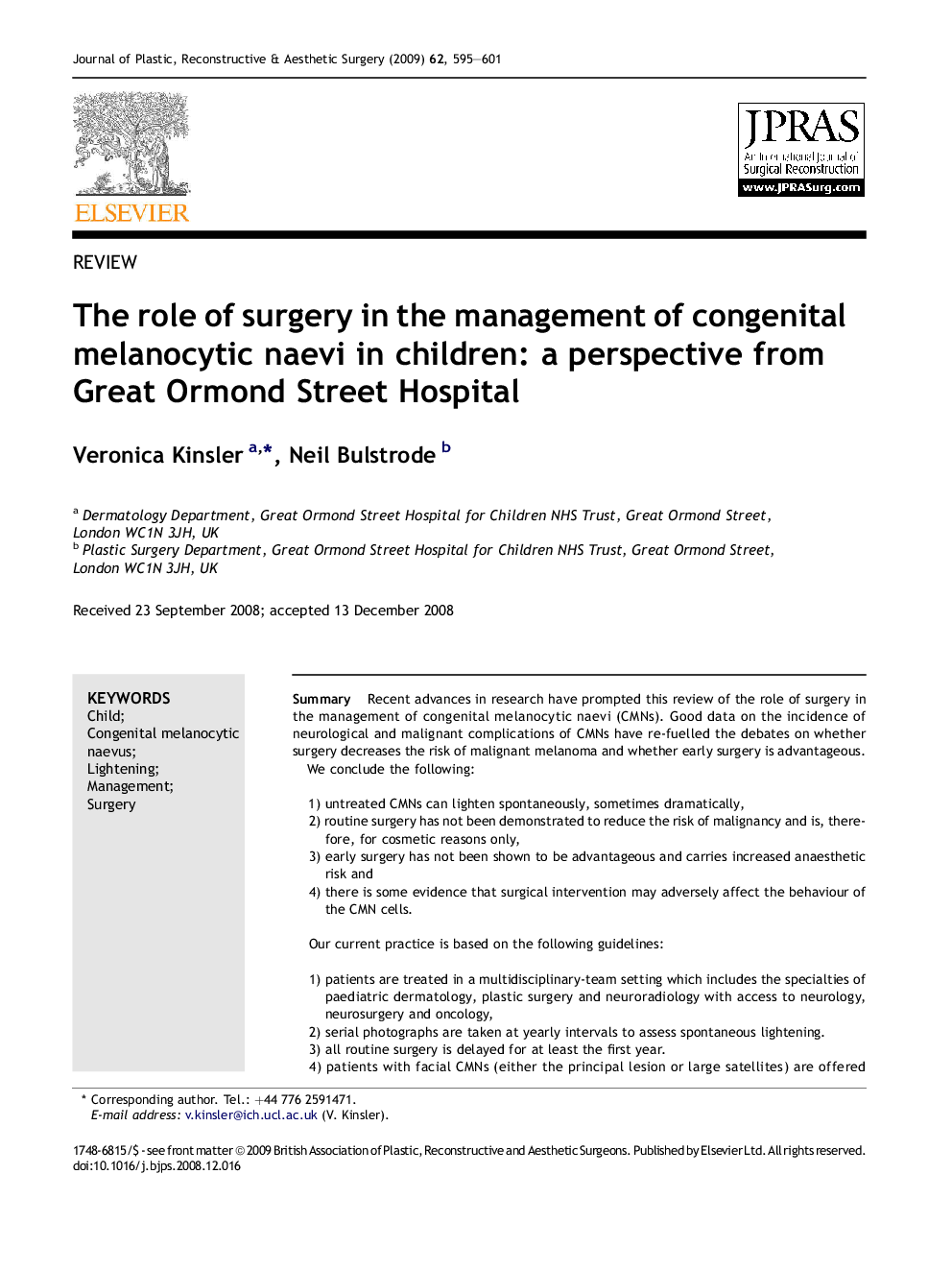| Article ID | Journal | Published Year | Pages | File Type |
|---|---|---|---|---|
| 4120591 | Journal of Plastic, Reconstructive & Aesthetic Surgery | 2009 | 7 Pages |
SummaryRecent advances in research have prompted this review of the role of surgery in the management of congenital melanocytic naevi (CMNs). Good data on the incidence of neurological and malignant complications of CMNs have re-fuelled the debates on whether surgery decreases the risk of malignant melanoma and whether early surgery is advantageous.We conclude the following:1) untreated CMNs can lighten spontaneously, sometimes dramatically,2) routine surgery has not been demonstrated to reduce the risk of malignancy and is, therefore, for cosmetic reasons only,3) early surgery has not been shown to be advantageous and carries increased anaesthetic risk and4) there is some evidence that surgical intervention may adversely affect the behaviour of the CMN cells.Our current practice is based on the following guidelines:1) patients are treated in a multidisciplinary-team setting which includes the specialties of paediatric dermatology, plastic surgery and neuroradiology with access to neurology, neurosurgery and oncology,2) serial photographs are taken at yearly intervals to assess spontaneous lightening.3) all routine surgery is delayed for at least the first year.4) patients with facial CMNs (either the principal lesion or large satellites) are offered surgery for cosmetic reasons,5) patients with a single, easily excisable CMN are offered surgery for cosmetic reasons and6) all families are made aware of the possibility of spontaneous lightening and the possibility that surgery may have effects on the behaviour of naevus cells.
